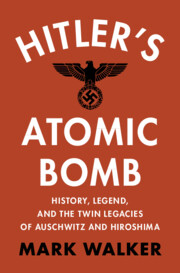Introduction
Published online by Cambridge University Press: 18 July 2024
Summary
In 1938 nuclear fission was discovered in Germany. Like their counterparts in other countries, German scientists brought the military potential of fission to the attention of officials and began researching isotope separation and nuclear reactors, the two paths to atomic bombs. During the Blitzkrieg phase of the war, powerful new weapons were not needed, so that the research had low priority and made modest progress. When the war slowed down in the winter of 1942-1942, the uranium research was evaluated with the result that it became clear that atomic bombs could not be made in Germany in time to influence the outcome of the war. Because the Americans, who had much greater resources, were apparently working on this, the Germans continued to as well. The steadily deteriorating state of the war made research more difficult, then impossible, as the scientists were focussed on their survival. After the war, the revelations of the Holocaust, and the atomic bombing of Japan, these scientists were criticized for collaborating with the Nazis and had to justify their work. The result was the legend of Copenhagen, a claim that they had in fact been trying to forestall all nuclear weapons.
Information
- Type
- Chapter
- Information
- Hitler's Atomic BombHistory, Legend, and the Twin Legacies of Auschwitz and Hiroshima, pp. 1 - 2Publisher: Cambridge University PressPrint publication year: 2024
